Joseph Graham Sugg is a YouTuber, actor, author and finalist from Strictly Come Dancing in 2019. In August 2012, he began posting videos on the YouTube channel ThatcherJoe, currently at over 7 million subscribers.
As far as he knows his mum’s family come from Wiltshire and he has a strong relationship with his maternal grandparents and would love this quest to discover more about that side of the family. He also has an idea that there is a link to Ramsgate and the seaside.
He is hoping that there won’t be any shocking characters unearthed in the Who Do You Think You Are? episode to be broadcast on BBC One on Tuesday 23rd November 2021.
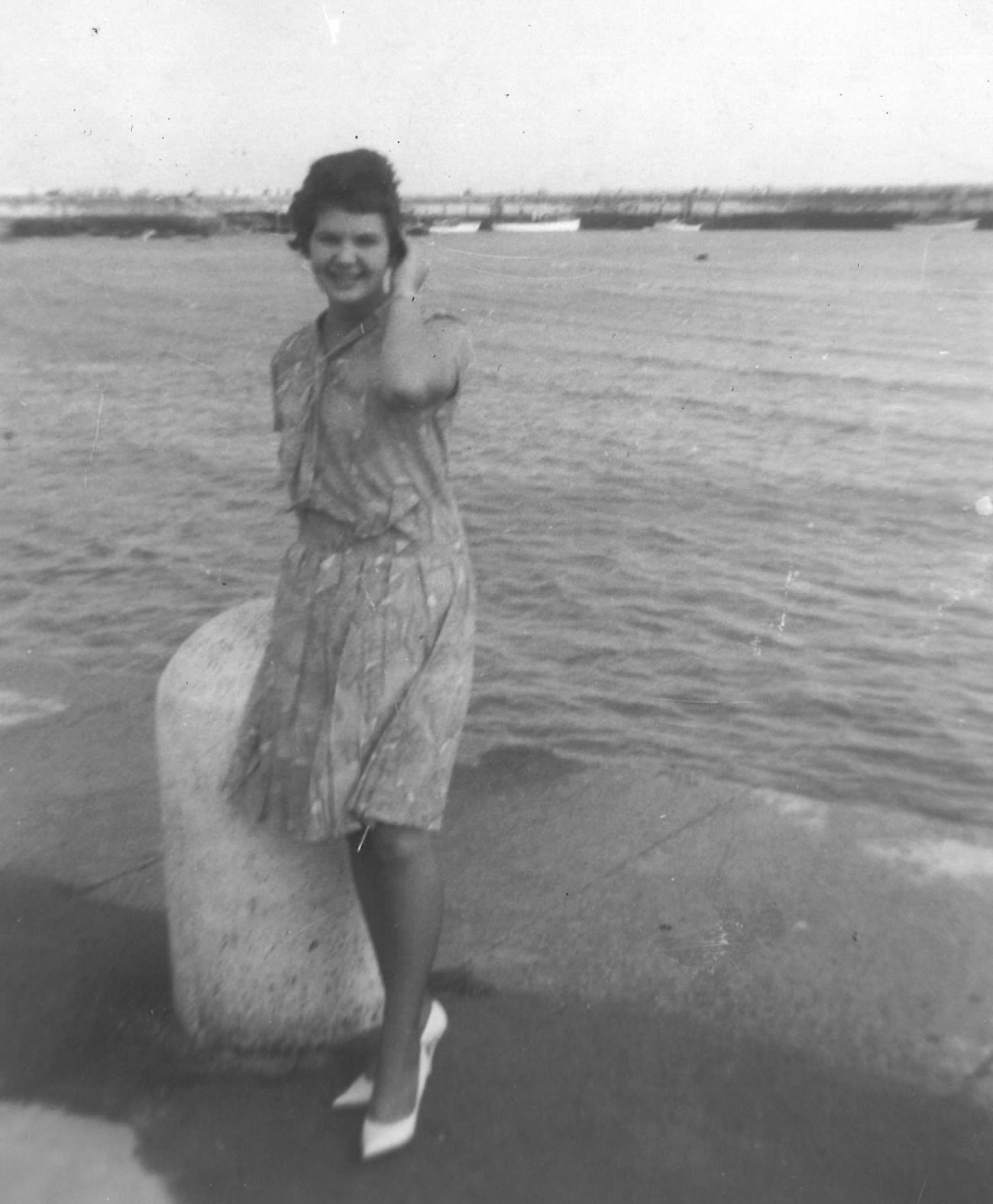
Joe begins his genealogical journey by visiting his mum and his sister because they know more about the family’s history than he does. They begin with a look through some family photographs including one of Joe’s grandmother Carol Philpott which may have been taken in Ramsgate. They look at a photo of Harry and Doris Phillpot, Joe and Zoe’s great grandparents. Going back another generation and Harry’s dad was Henry Phillpot and Joe’s mum has a copy of the marriage certificate that shows that Joe’s 2x great grandparents had married in 1911 in the Ebenezer Chapel in Ramsgate. Henry was 25 at the time and married Mabel Louise Pritchard who was 24. Mable Pritchard’s dad is recorded as being Albert, a Telegraph Operator. Discovering this occupation of their ancestor delighted the two techy Sugg siblings. The marriage certificate also reveals Albert’s middle name to be Le Mesurier and seems to back up a family story that there was a French connection in the family.

Joe’s sister Zoe decides to go away and investigate their Granddad Chapman’s side of the family while Joe concentrates on the Pritchard line. The first record in this research is an 1861 census that shows Joe that the Pritchards were recorded in the Channel Islands living in Jersey. Albert’s father is Thomas Pritchard and his mother was called Emily. But it is the information that both Albert and his brother Adolphus work for a Telegraph Company which is of interest to Joe.
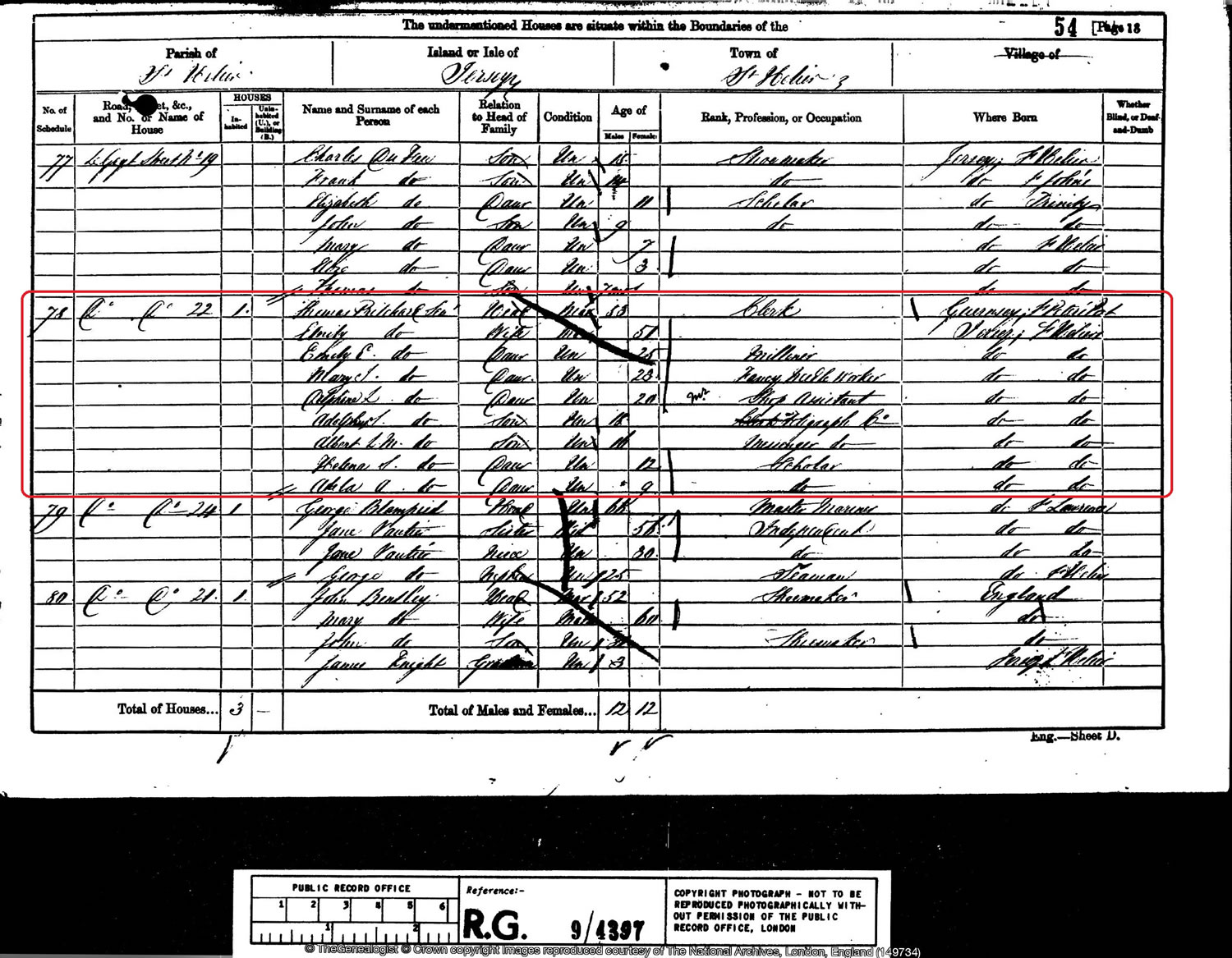
To find out more Joe meets Elizabeth Bruton, Curator of Technology and Engineering at The Science Museum in London who is able to explain that global communications began in the Victorian age with the Telegraph. Adolphus, the elder of the two brothers, had been a clerk and would have sat in the office and tapped out a message in morse code. The messenger, in this case Albert, were essential as they then delivered the message to the home or workplace of the person whom the message was for. Albert Pritchard, however, would not stay a messenger as soon he would also rise to become a Telegraph Clerk like his brother.
Electrical Telegraphy was developed in the 1830s and 40s and the most widely used system utilized cables to send morse code down the line. This was easier on land where lines could be strung from telegraph poles, but then the development of undersea cables began to show it was possible to communicate in this way between islands.
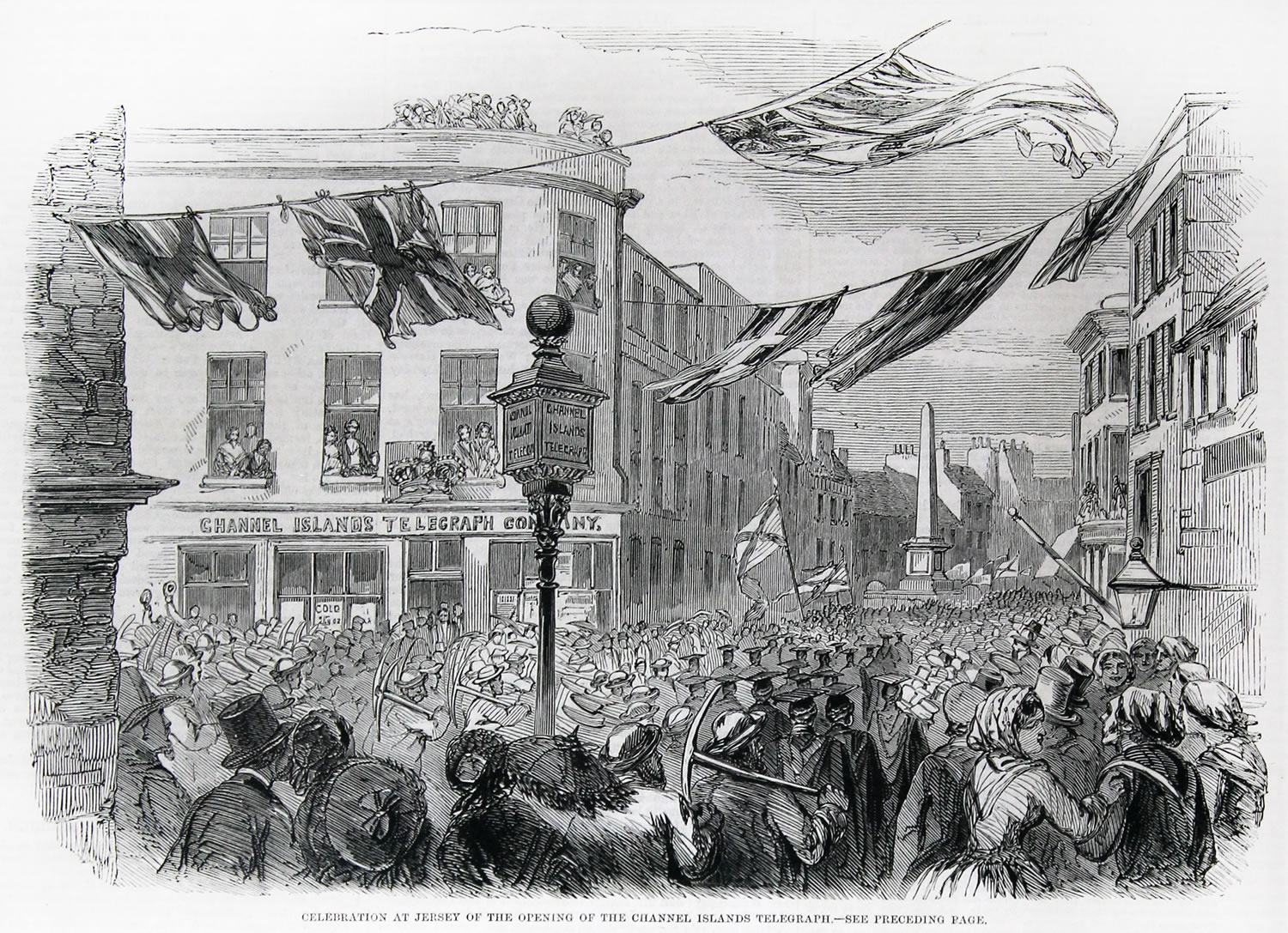
Joe sees a picture of the Channel Island Telegraph Company office being opened and then reads from British Press & Jersey Times for Jan 19th, 1863 about the interesting experiments at the Jersey Telegraph Office that had now introduced a new and better connection from the island with London. The article reveals that two young Jerseymen were on duty in the London office at the time, one of which was Joe’s 3x great grandfather Albert Pritchard who had formerly been employed in the Jersey office. It is Albert who exchanges the messages with his home isle and typically for the British anywhere in the world, there is talk of what the weather is like over the morse code lines. By searching the Newspapers & Magazines on TheGenealogist we can see the picture of the opening of the Jersey office a few years earlier reproduced in The Illustrated London News October 1858. Exploring the Image Archive on TheGenealogist reveals a picture of the Central Telegraph Office in London where Joe’s Jerseyman ancestor would have worked.
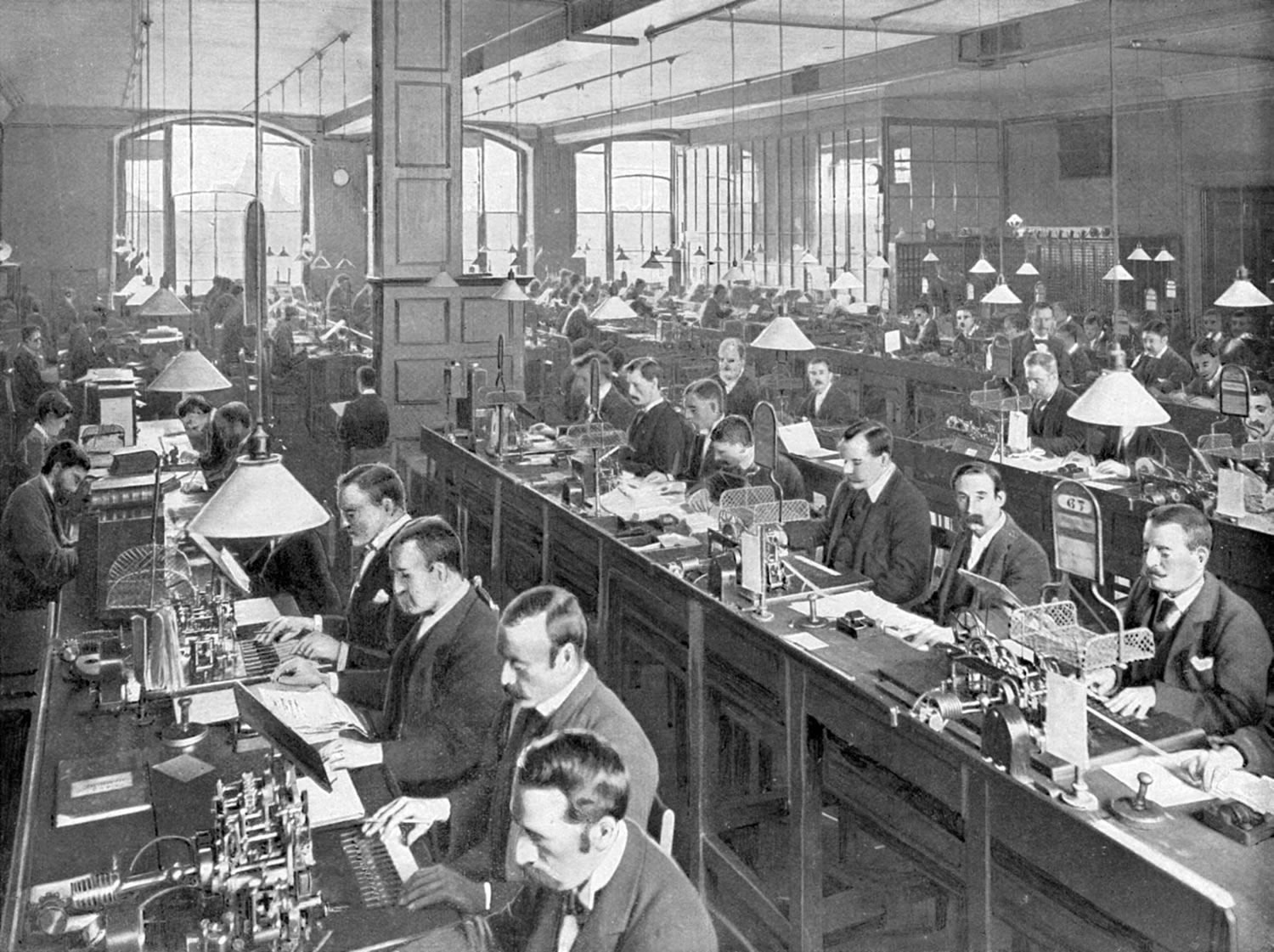
The next record is a sad one. In a copy of the Burials in the Parish of St Helier, Jersey for March 1871 Adolphus Pritchard aged 21 is recorded having died from phthisis, a form of Tuberculous. Another record for October 10th 1870 and Thomas, the brother’s father aged 62 and Joe’s 4x great grandfather, had also died from the same disease. Joe sees the parallel between Adolphus and Albert being together at the cutting edge of new communication technology and Joe and his older sister, Zoe and their early adoption of social media. He also realises that he is so close to the age when Adolphus died. It appears that Joe has made a connection to the brothers so that Adolphus’s death shocks him.
At the Pathology museum in London Joe meets Dr Helen Bynum to find out about the disease that killed his ancestors. Dr Bynum explains that at the time that Thomas was born in the early part of the 19th century 1 in 4 deaths were caused by TB. She shows Joe a piece in the Lancet about what Jersey was like from a sanitary point of view in that period. The island was a resort that encouraged people to come for the benefit of their health and therefore was importing the disease into its community. Phthisis was common among the islanders in this time, so there were many opportunities to catch it. Joe is then able to see yet another document taken from the Parish of St Helier Burials this time it is for September 1872 and it is Emily Le Riche, the widow of Thomas Pritchard whose death it records. Then another one is found for Albert’s elder sister, Emily Elizabeth, in 1874 at the age of 39 followed by yet another in 1875 for his 26 year old sister Helena Sophia. In the space of just five years the family had lost five members to the disease that killed an estimated 4 million people in the UK in the latter half of the 19th century.
Access Over a Billion Records
Try a four-month Diamond subscription and we’ll apply a lifetime discount making it just £44.95 (standard price £64.95). You’ll gain access to all of our exclusive record collections and unique search tools (Along with Censuses, BMDs, Wills and more), providing you with the best resources online to discover your family history story.
We’ll also give you a free 12-month subscription to Discover Your Ancestors online magazine (worth £24.99), so you can read more great Family History research articles like this!
Six years on from the last death in Jersey and Albert turns up in the 1881 census of Ramsgate, Kent married and with a clutch of his own children. He is still a Telegraph Clerk and is living at 1 Shah Place.

To continue on his quest Joe then goes to Ramsgate in order to meet with genealogist Anna Baghiani. She shows him some pension records that reveal how Albert had started on 10/- in Jersey and by the time he moved to Ramsgate he was now Clerk in charge of the Submarine Telegraph Company in Ramsgate and by that time earning 50/- a week with the added bonus of a house. Albert worked in this role until 1897 and he died in Ramsgate in 1901.
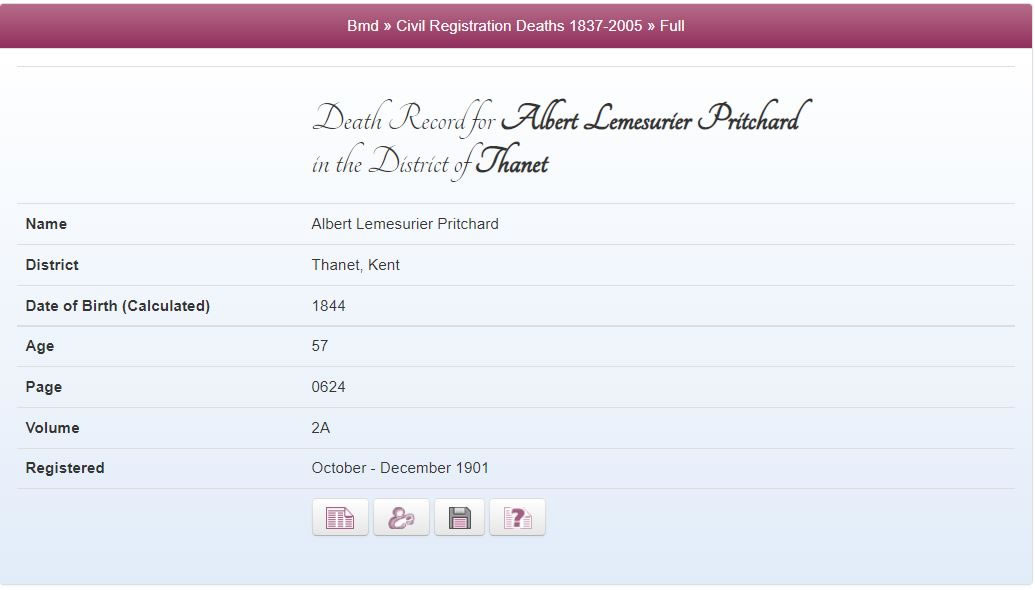
Our own research in the Trades, Residential and Telephone Directories on TheGenealogist shows us that Albert L Pritchard is listed in the 1895 Kelly’s directory as an artist at the same address in Shah Place that is recorded in the 1891 census as the Submarine Telegraph Office, where he is the Head. So this shows an artistic as well as a technical side to Joe’s 3x great grandfather.
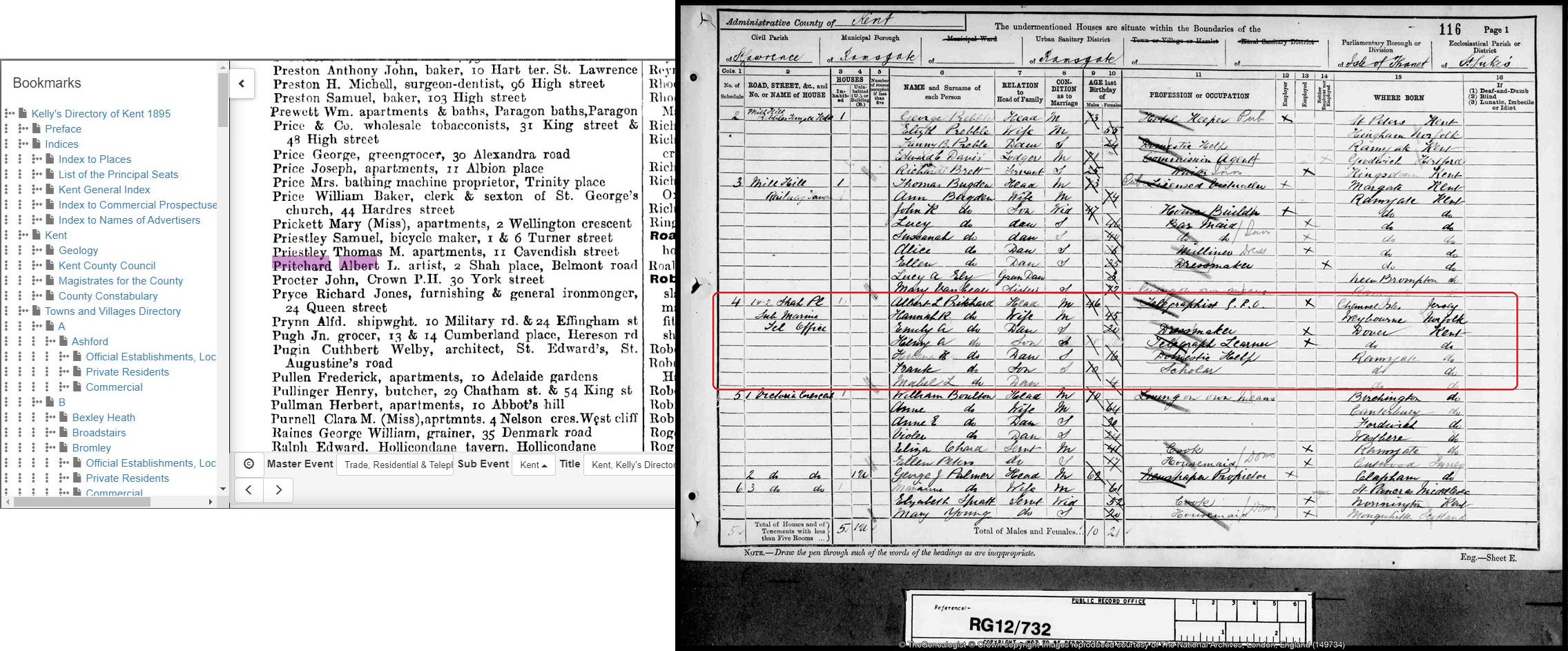
Anna then shows Joe a family tree that takes this line back to his 7x great grandparents with the wonderfully French sounding names of Jean Sorel and Marie Le Marchand. Burial records from Jersey in 1753 identify them as refugees from France. Now Joe has found the proof to the family story that they had French connections, here it was in 18th century Jersey where his French ancestors had taken refuge. Joe feels that he has been on a tough and emotional journey with Albert. He loves that his ancestor stuck to the job that he clearly loved and in the end was well rewarded for. But now, with the news that his 7x great grandparents were refugees he is anticipating that there are more harrowing discoveries to be made.
To look into the story of French refugees coming to the British Isles Joe goes to see Sandra Robinson at the French Church in Soho who explains that they were most likely French Protestants that had left France to come to a Protestant country. The research that she has done indicates that the Sorel family were comfortably well off Huguenots from a small village in Normandy called Frênes where they were merchant drapers. While Protestants had the right to worship in the majority Catholic France, from the 1630s tensions were already making it difficult for this minority. This was only to increase when in 1643 Louis XIV came to the throne believing that the Huguenots were a threat to his reign. Louis ordered the destruction of all Protestant churches in France and in 1685 he outlawed Protestantism. Furthermore he forbade Protestants from emigrating on pain of death. Jean and Marie were born into this turbulent time when their families would have to practice their religion in secret.
Joe is shown a document in which his ancestor’s son Jean Jr was baptised a Catholic on the 4th August 1735. The way it had been recorded labeled the child as illegitimate because his parents’ marriage in the Protestant Church was not recognised by the Catholic Church. Then in 1747 the King targeted the last remaining Protestant areas of France with a new law. Catholic Priests could now round up Protestant children between the ages of 5 and 16 and place them in Catholic convents against their parent’s will. Jean Jr would have fallen into this age group being 12 years old at the time.
The next document that Joe is shown lists the names of French Protestants that had left France for their religion and were now residing in the Island of Jersey. It is dated April 1750 and includes the names of the children from the Sorel family, but not the parents. The children were smuggled to Jersey first and the parents would have followed at another time. This then is how Joe’s French family came to the British Isles.
The Maternal Line in Salisbury
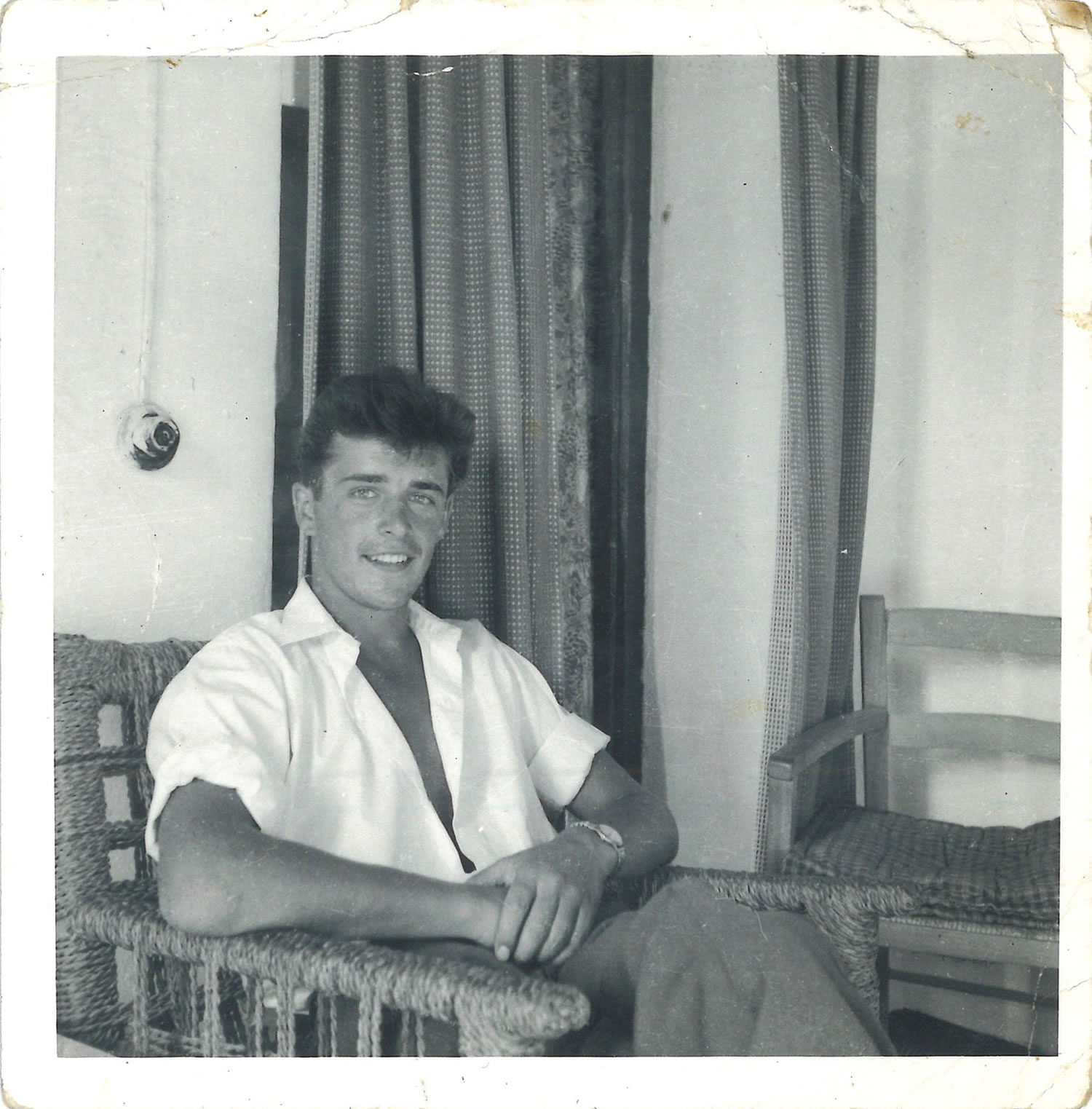
Having found out about his maternal grandmother, Carol Philpott’s side of the family, Joe wants to explore her husband, Richard Chapman’s line. His sister Zoe had been doing some investigating and so when they met up she was able to show him a family tree reaching back to 1783 and their 5 x great grandparents. William Sandford Wapshare and Cooth Anna Austen married in 1813 and William is a Minister at St Thomas in Salisbury. Wanting to explore this ancestor further Joe goes to St Thomas where Canon Kelvin Inglis tells Joe that his 5x great grandfather had been the minister at the church when the beautiful “Doom’‘ painting was discovered in 1819. This medieval judgement painting above the chancel arch is spectacular and dates back to the 1470s. A picture of this is available on TheGenealogist in the Image Archive.
Access Over a Billion Records
Subscribe to our newsletter, filled with more captivating articles, expert tips, and special offers.
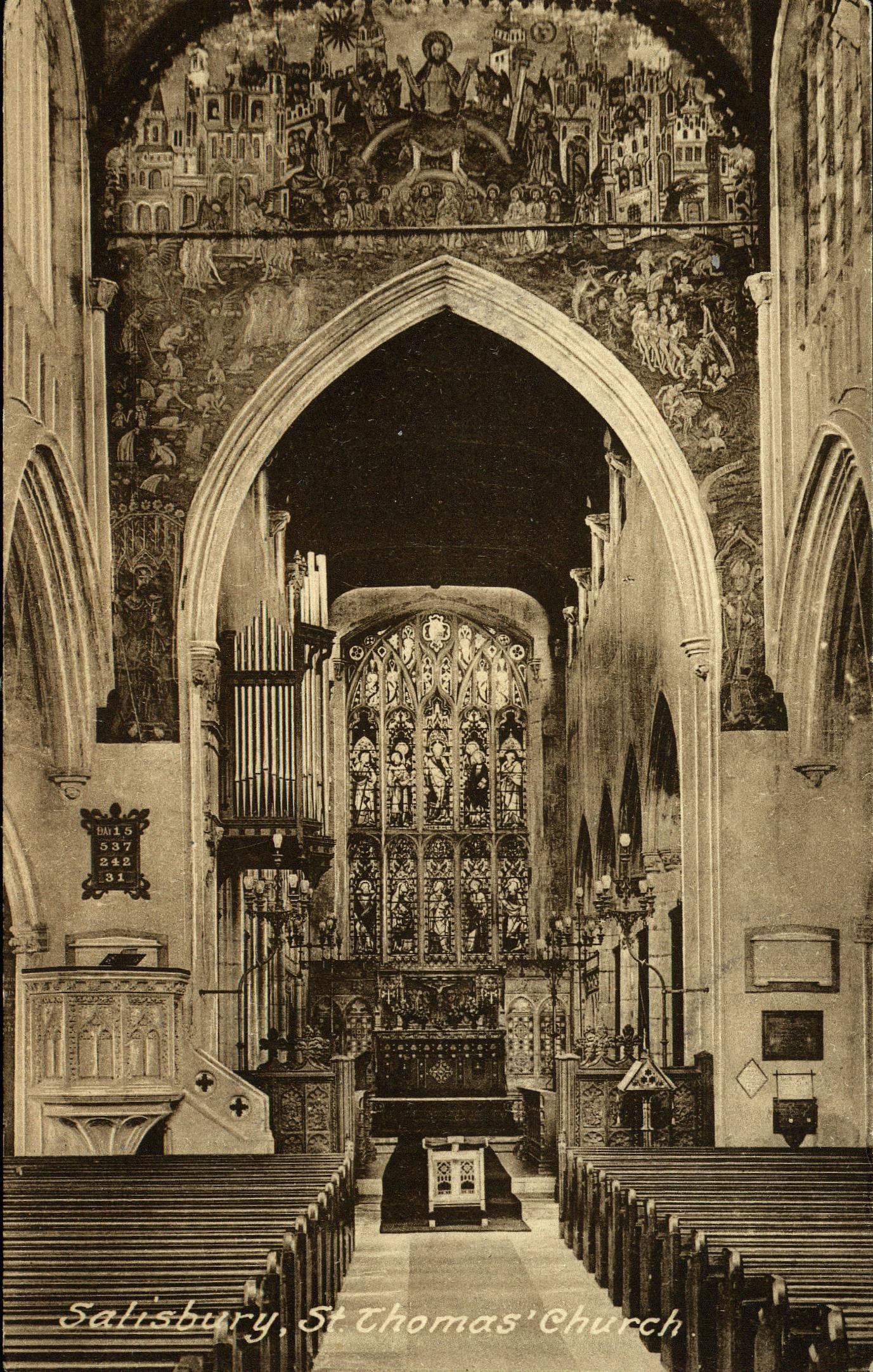
Further research on TheGenealogist allows us to find the Rev Wapshare in the Index Ecclesiastics 1800-1840 that shows another church in Wiltshire in which he later served. We are also able to discover his will from the probate records of the Prerogative Court of Canterbury that shows he would have only been 38 at the time of his death in 1822.
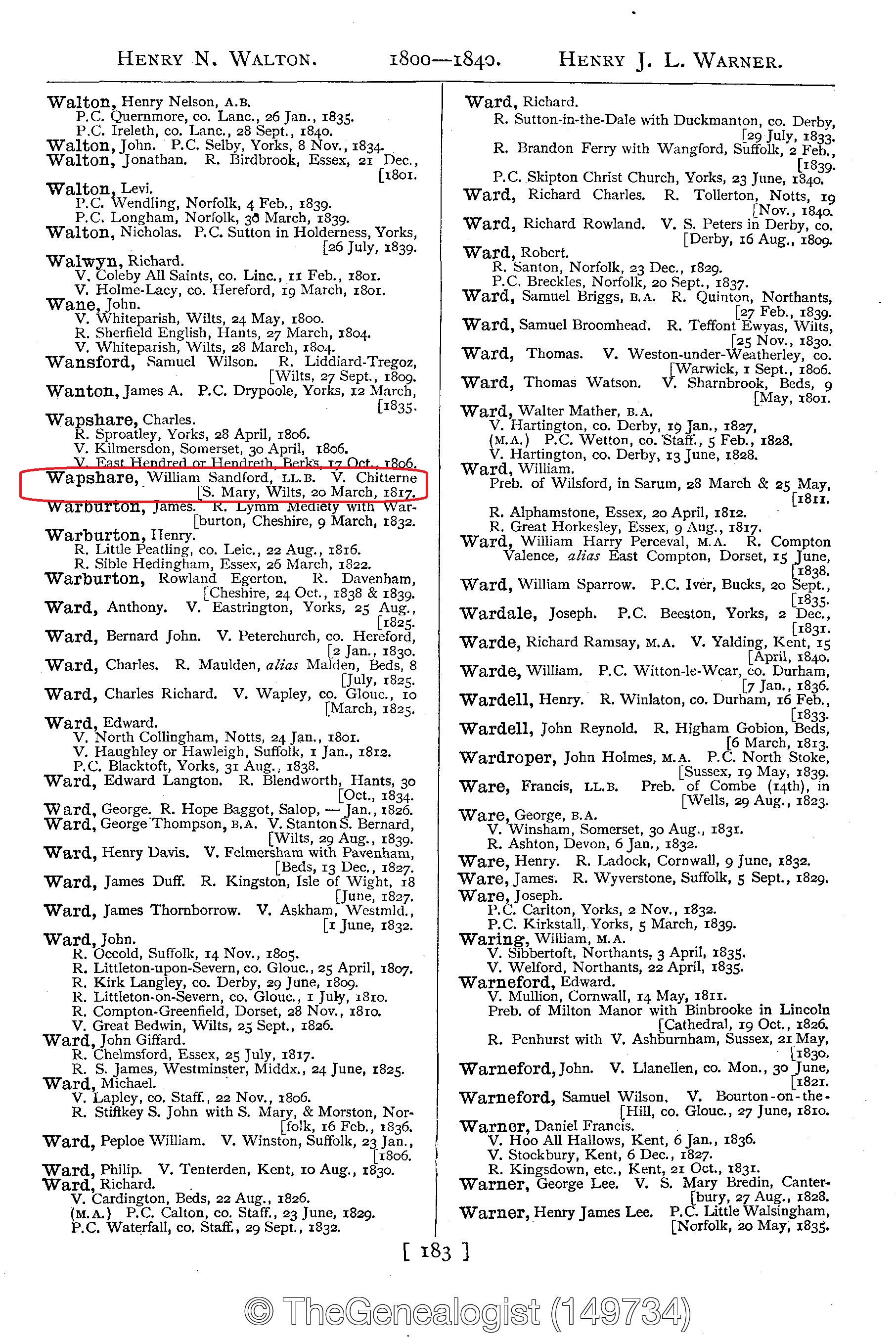
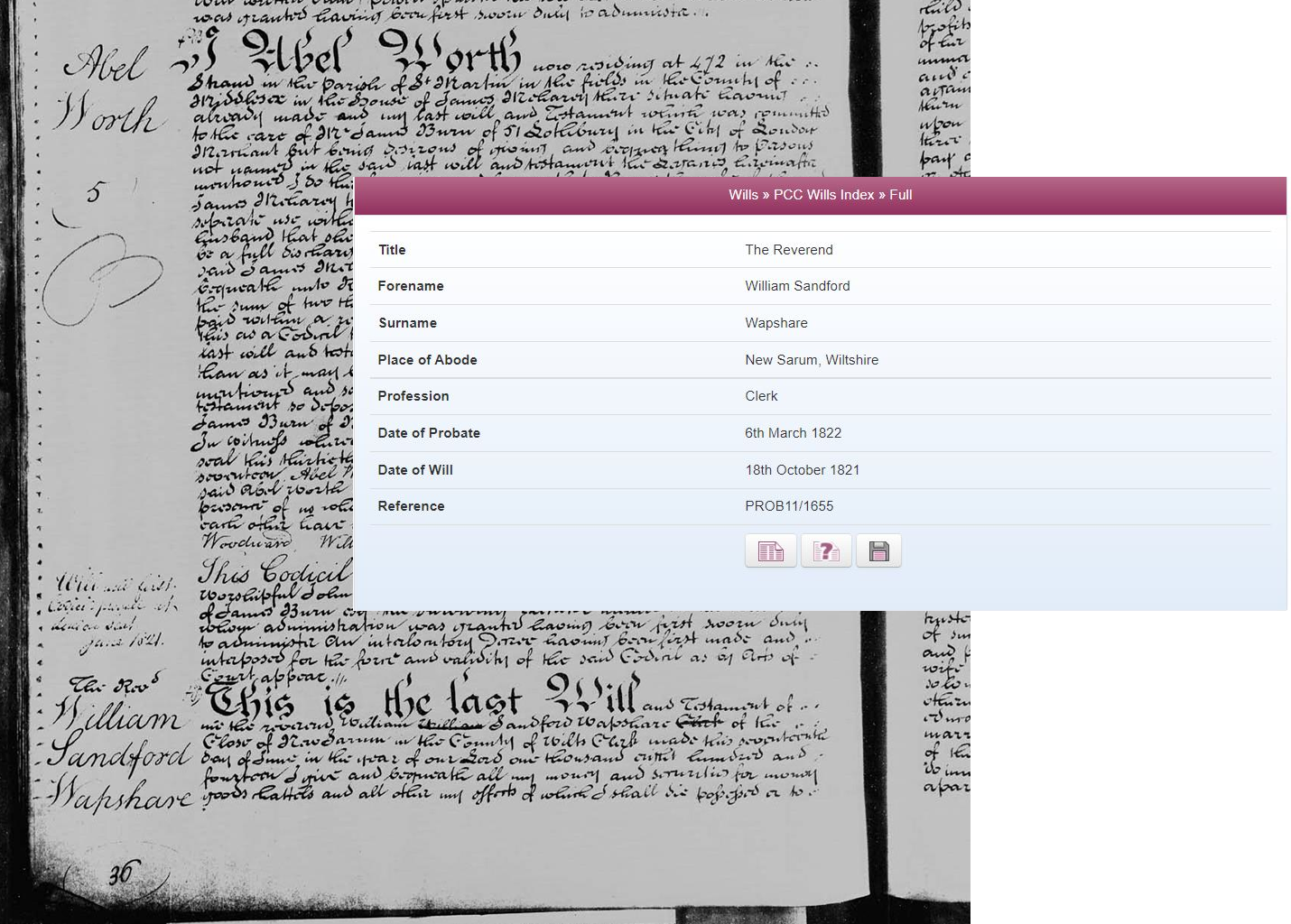
From a baptism entry in the church register for one of his own children, his abode at the time of this christening was recorded as being in the Cathedral Close in Salisbury; so this is where Joe heads to meet historian Cheryl Butler in the very house that his ancestors William and Cooth Wapshare would have lived in. Cheryl is able to show Joe that they are able to follow Cooth’s line back to the baptism in 1624 of John Austen (10x great grandfather). John, it emerged, was wealthy enough to send his son, Henry (Joe’s 9x great grandfather) to Eton College from 1673-1681.
The Eton College Register 1441-1698 divulges that Henry’s father, John Austen, had been a citizen and jeweller of London and so Joe heads back to London to seek more information, this time helped by Paul Jagger in the City’s jewellery district. Paul has found some apprenticeship records that spelled the surname then as Austell. John, son of Henry Austell of Peasemore, Berkshire was apprenticed for eight years to Edward Cook, Citizen and Goldsmith of London. Joe’s 10x great grandfather appears to be a Berkshire country boy who went to London to make his fortune. Interestingly, on 30 April 1647 and a mere nine years later, he took on his own apprentice. As John was described in the Apprenticeship deed as a Citizen and Goldsmith this points to him being a member of one of the City of London’s Livery Companies, in this case the Goldsmiths Company or Guild.
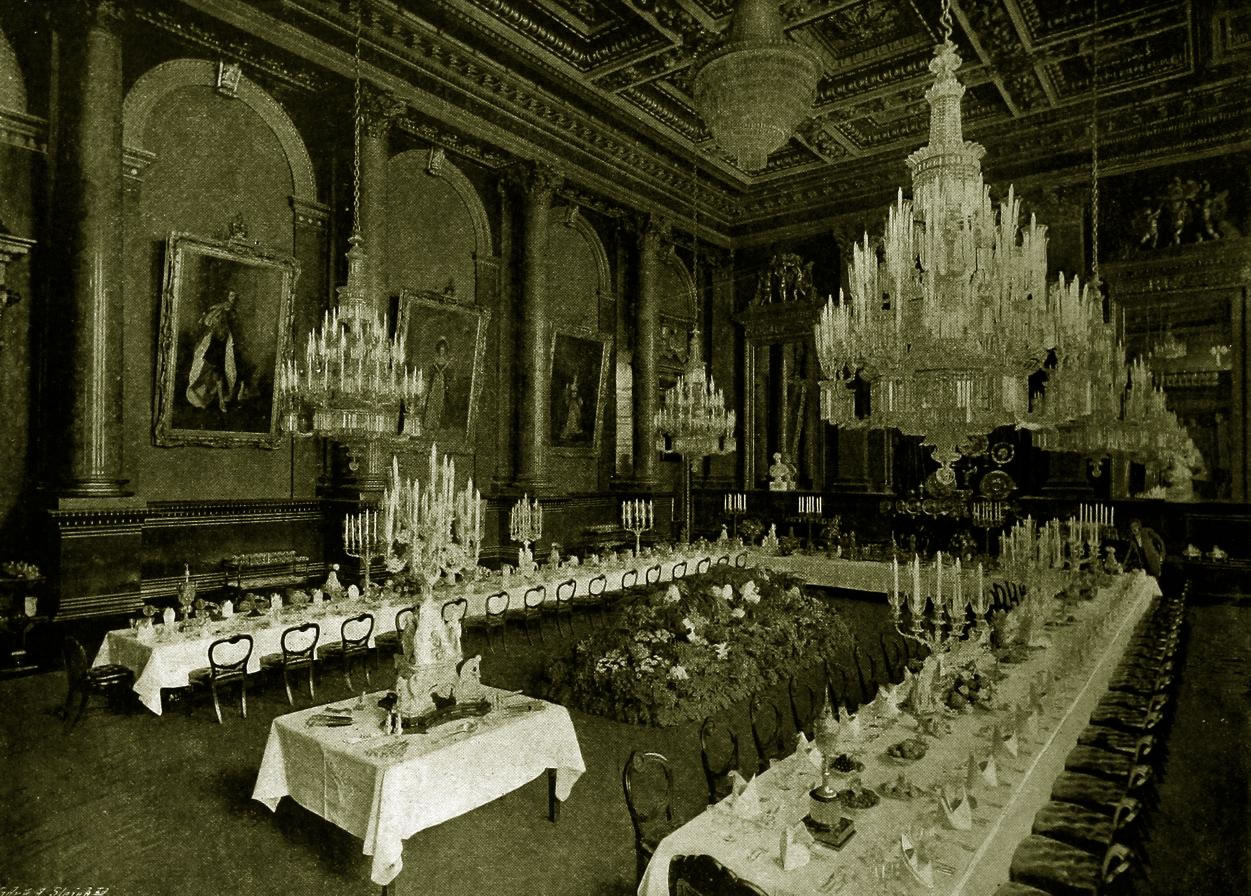
Moving forward in the records and approximately twenty years on, the Register of Hearth taxes in 1666 showed that John had 16 fireplaces, many more than the others on the page. 1666 was, as Joe recalled, the year of the Great Fire of London and his ancestor lived in Foster Lane not far from the Goldsmith’s Hall. His house would have been consumed by the fire that started in Pudding Lane. At Goldsmiths Hall he meets their librarian Eleni Bide. The Goldsmith’s Hall of the time was also destroyed, however the records were saved. This allows Joe to find out that John became Prime Warden of Goldsmiths of the City of London 1667 and 1668. He is in charge of the Company of Goldsmiths, but Eleni points out that it is a terrible time with fellow Goldsmiths having lost their shops and the guild’s own hall gutted. The decision was made to sell some of their treasures to support the members and to rebuild their headquarters.
John died in 1670 and Eleni has a copy of the inventory of what he owned at the time of death. Joe is flabbergasted at the descriptions of the jewellery pieces that included over 1600 diamonds! The list of clients that owed him money included Dukes and Countesses. A search of the PCC Wills on TheGenealogist for 1670 finds a will for John Austen from the Parish of St John Zachary, London. As this was a medieval church, barely a minute’s walk from Goldsmith’s hall and which was also destroyed in the Great Fire of London, this appears to be the correct Will for Joe’s 10x great grandfather John Austen.
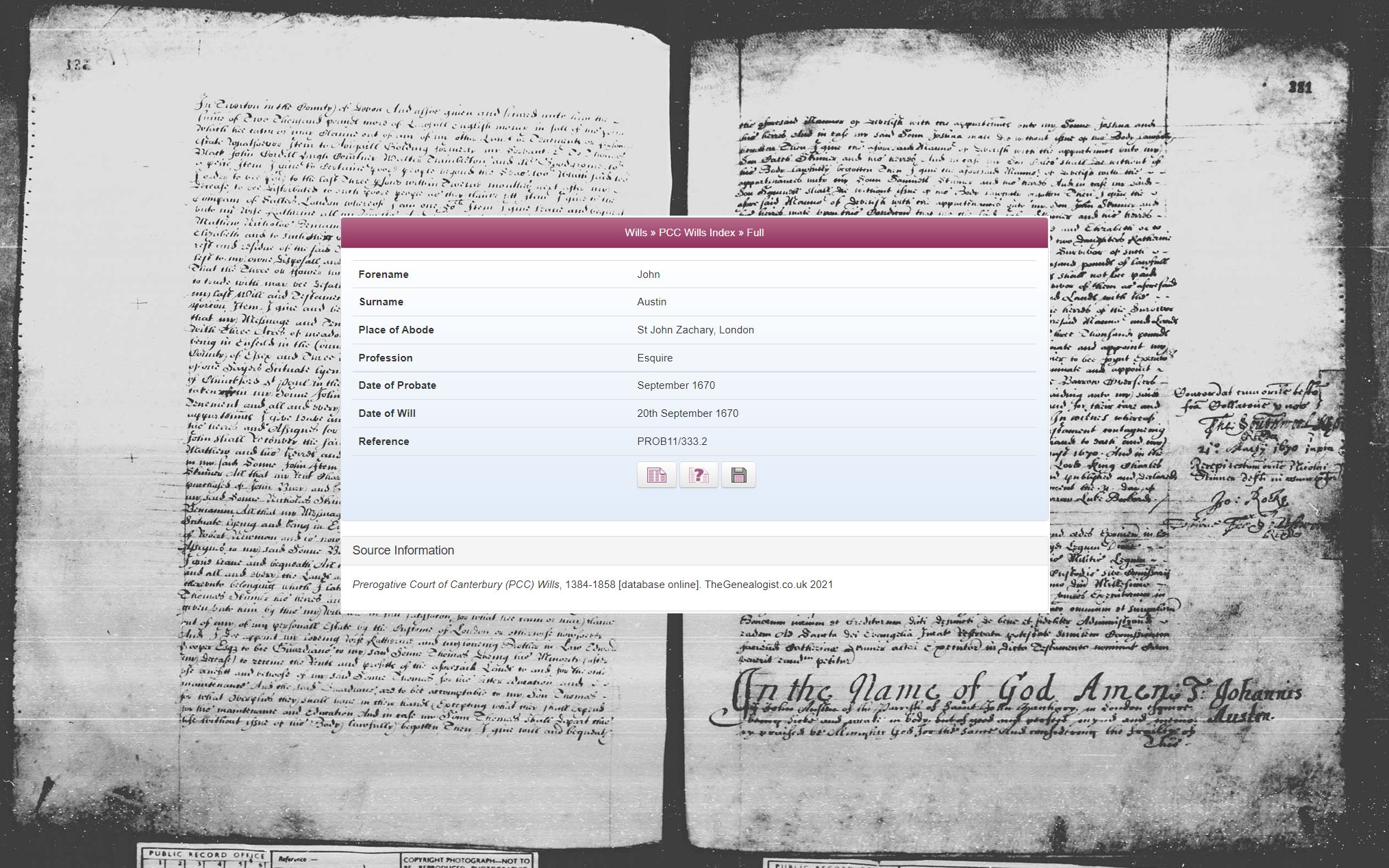
Amongst my ancestors there’s this recurring theme of determination. Throughout all those troubled times they have really stuck at it and worked hard and it has paid off.
I think what they did was incredible. I am so proud.
From Census entries, Death records, Occupational records plus Newspaper & Magazines and PCC Will records, together with evocative pictures from the Image Archive on TheGenealogist, we have been able to discover some of Joe Sugg’s family history to compliment the research carried out in the TV programme Who Do You Think You Are?
Sources:
Press Information from Multitude Media on behalf of the programme makers Wall to Wall Media Ltd
Extra research and record images from TheGenealogist.co.uk
BBC/Wall to Wall Ltd Images






